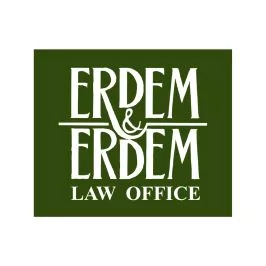Introduction
The term "holding," which is regarded as the framework that consists of more than one corporation, was legally defined as "companies with the sole purpose of joining with other companies" under Article 466(2) in the repealed Turkish Commercial Code numbered 6762 ("rTCC"). There is no definition for holding companies in the Turkish Commercial Code in force, numbered 6102 ("TCC"). A holding is a joint stock company1 as regards its activities, and is engaged, solely, with joining other companies in terms of its subject matter2.
Special Regulations Regarding Holding Companies
Holding companies are subject to special regulations of the Ministry of Customs and Trade. Under Article 5 of the Communique Regarding the Increase of the Share Capital of the Joint Stock and Limited Companies to the Newly Determined Minimum Values and Determination of Joint Stock Companies, the Incorporation and Amendment of Articles of Association of which are Subject to Permission published in the Official Gazette dated 5 November 2012 and numbered 28468 ("Communique"), holding companies are among those companies, the incorporation and the amendment of the articles of association of which are subject to permission of the Ministry of Customs and Trade ("Ministry").
Under Article 6 of the Communique, prior to the registration process before the trade registry directorate for the establishment of a holding company, permission must be obtained from the Internal Trade General Directorate of the Ministry ("General Directorate"), applying with (i) articles of association, including the signatures of the incorporators approved by the notary public and (ii) assent or permission letter for those companies requiring the assent or permission of the other official institutions for their incorporation.
As per the amendment of the articles of association, under Article 5 of the Communique, permission should be obtained from the General Directorate applying with (i) notarized board of directors resolution regarding the amendment of articles of association, (ii) amended article(s) of the articles of association, and (iii) assent or permission letter for those companies requiring the assent or permission of other official institutions for their amendment of the articles of association.
Also, if the amendment of the articles of association is regarding increase or decrease of the share capital, financial accountant and/or expert reports must also be presented along with the abovementioned required documents.
Ministry permission must be obtained prior to the registration process before the trade registry directorate for the establishment of the holding company and before the date of the general assembly. Incorporation and amendment of articles of association cannot be registered without the Ministry's permission at the trade registry directorate.
There is a special provision regarding the TCC requirements of legal reserve for holding companies.
In principle, under Art. 519(1) of the TCC, five percent of the annual profit of joint stock companies is set aside for the general legal reserve until twenty percent of the share capital is reached. Following the attainment of the limit of twenty percent of the share capital by the general legal reserve, under Art. 519(2)(c), after profit, corresponding to five percent, is paid to the shareholders, ten percent of the amount to be distributed to those persons entitled to shares in profit will be added to the general reserve. In addition, under Art. 519(3), provided that the general legal reserve does not exceed one-half of the share capital or the issued share capital, it can only be used for the recovery of losses, or for precautionary measures for the prevention of unemployment and its consequences.
The abovementioned provisions under Articles 519(2)(c) and 519(3) of the TCC are not applied to holding companies that have the sole purpose of joining other companies. Consequently, legal reserves turn into a voluntary reserve for holding companies not bound by these requirements3.
Exceptions withheld, holding companies are restricted in terms of purpose and subject matter in joining other companies.
As mentioned, above, a holding company is engaged in joining one or more other companies providing the opportunity for management and control. Therefore, a holding company is not a direct establishment, but, instead, is a joint stock company established for the aim of benefiting from the advantages of the presence of more than one corporation under one single organizational framework, and holding the management of the companies within this framework4.
In summary, a holding company is a joint stock company5 in terms of its activities, and is engaged, solely, in joining other companies in terms of its subject matter6. Thus, it cannot be engaged in other activities, such as the sales of products, transfer, or acquisition of licenses.
Liability of Board Members of Holding Companies and Differentiated Joint and Several Liability
It is especially significant with regard to the holding company structure what the liabilities of the board members will be. As a consequence of the nature of the holding companies, and since the board members of holding companies are the board members of companies established only for the purpose of joining other companies, their liability for activities of the subsidiaries is restricted. This restriction of liability is based on the differentiated joint and several liability under Article 557(1) regulating the internal relations of the liable parties. Pursuant to this article, "if there are more than one parties liable for the compensation of the same damages, each of the liable parties will be jointly and severally liable to the extent that liability can be attributed to that party according to fault / negligence and the circumstances of the case." Provided that the actual commercial activity is carried out by the subsidiary, without taking instructions from the holding board of directors, liability of the board members of such holding company is less for the subsidiary activities than for the subsidiary board members.
In light of the concept of "attribution of damages," as regulated under Article 557(1) of the TCC, a reasonable link of causation should be established between the damages and the actions of the damaging party for such damages to be attributed to that party7. Therefore, in order for the liability of the holding board members to be limited in respect of the damages arising out of the actions of the subsidiary, such board members should not have given any instructions to cause any damaging actions.
Potential Liability arising out of the Provisions Regarding Groups of Companies
Dominance of holding companies on the subsidiaries is perpetual, and subsidiaries within the framework of the holding work in accordance with a main policy. However, such circumstances do not prevent the freedom of subsidiaries as required by their field of work. Subsidiaries within the framework of holdings possess separate legal personalities, and the union that we see does not allow for mergers8.
On the other hand, there might be a structure that a holding is also conceived of as a group of companies under the TCC. In order to conclude that such a group of companies exists, and which is a different concept than for a holding company, there must be (i) two subsidiaries and one parent company, as provided for under Art. 105 of the Trade Registry Regulation, published in the Official Gazette dated 27 January 2013, and dated 28541, and (ii) such parent company should have exerted dominance over the subsidiaries by means of majority in share capital, majority in voting or majority in the number of board members. Therefore, group of companies is not a type of a joint stock company9. However, if these two conditions are fulfilled, a holding company as a parent company and two subsidiaries under its dominance would be able to constitute a group of companies.
If a holding company also constitutes a part of a group of companies, special provisions applied to the group of companies would also affect the holding company, which qualifies as the parent company. At this point, it is required to consider the circumstances, wherein especially the parent company might be liable.
Unlawful Use of Dominance and Its Consequences
The practice of dominance of a parent company over the subsidiaries is not illegal on its own. Art. 202 of the TCC regulates two different circumstances of unlawfulness as a consequence of actions of the board of directors, and as a result of significant resolutions of the general assembly. These give rise to liability of the parent company.
The first category under Art. 202/1 of the TCC includes certain operations and actions within the authority of the board of directors, and which may constitute violation of the care obligation of the board of directors and cause loss to the subsidiary.
In accordance therewith, a parent company cannot use its dominance in a way that would cause loss of the subsidiaries. In this instance, the concept of loss includes both the loss and exposing to risk the company's assets and profitability. Some operations and decisions that may result in such damage under Art. 202/1 of the TCC have been listed, inconclusively, and it has been accepted that if the damages of the subsidiary, arising out of such actions, is not recovered in that year, or if those cases where a right of demand, corresponding to the amount of this value is not granted to the subsidiary, such cases would be accepted as unlawful.
The second category under Art. 202/2 of the TCC includes the subsidiary's general assembly resolutions of structural quality and significance. In these cases, unlawfulness is a result of the use of dominance in the significant resolutions such as merger, demerger, change of type, issuance of securities, and important amendments of articles of association, and of the lack of clear, reasonable grounds of such resolution of the subsidiary.
Trust Liability
Under Art. 209, a parent or holding company has a trust liability in those cases where the public reputation of such company has reached a level that generates trust in the public or consumers. In this case, such liability is towards those parties that are engaged in commercial relations with the subsidiaries.
Conclusion
A holding company is a joint stock company where a company joins one or more than one company in a way that would provide the opportunity with management and control, and a company that is solely engaged in joining other companies in terms of its subject matter. Such types of joint stock companies are subject to the permission of the Ministry for their establishment and amendment of articles of association, and are granted some relief with regard to legal reserve requirements. Holding companies, which are different from groups of companies, can also be bound by the liability provisions of the parent company, which has a dominant position, if the conditions for the presence of a group of companies are fulfilled.
Footnotes
[1] Pulaşlı Hasan, Şirketler Hukuku Genel Esaslar, Güncellenmiş 2. Baskı, Ankara 2013, p. 151-152
[2] Pulaşlı Hasan, Şirketler Hukuku Şerhi, Cilt I, Ankara 2011, p. 275-277.
[3] Çakır Rasim Can, 6102 sayılı Türk Ticaret Kanunu'nda holding şirketler, Dünya Gazetesi, 24 Ocak 2014, http://www.dunya.com/gundem/6102-sayili-turk-ticaret-kanununda-holding-sirketler-haberi-235659 .
[4] Üçışık Güzin, Çelik Aydın, Anonim Ortaklıklar Hukuku, I. Cilt, 2013, p.88-91.
[5] Pulaşlı Hasan, Şirketler Hukuku Genel Esaslar, Güncellenmiş 2. Baskı, Ankara 2013, p. 151-152.
[6] Pulaşlı Hasan, Şirketler Hukuku Şerhi, Cilt I, Ankara 2011, p. 275-277.
[7] Tekinalp Ünal, Sermaye Ortaklıklarının Yeni Hukuku, 4. Bası, İstanbul, 2015, p.464.
[8] Üçışık Güzin, Çelik Aydın, Anonim Ortaklıklar Hukuku, I. Cilt, 2013, p.89.
[9] Pulaşlı Hasan, Şirketler Hukuku Şerhi, Cilt I, Ankara, 2011, p. 276.
The content of this article is intended to provide a general guide to the subject matter. Specialist advice should be sought about your specific circumstances.

